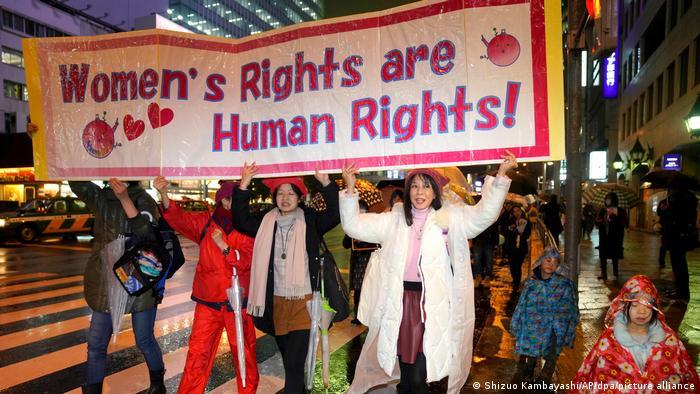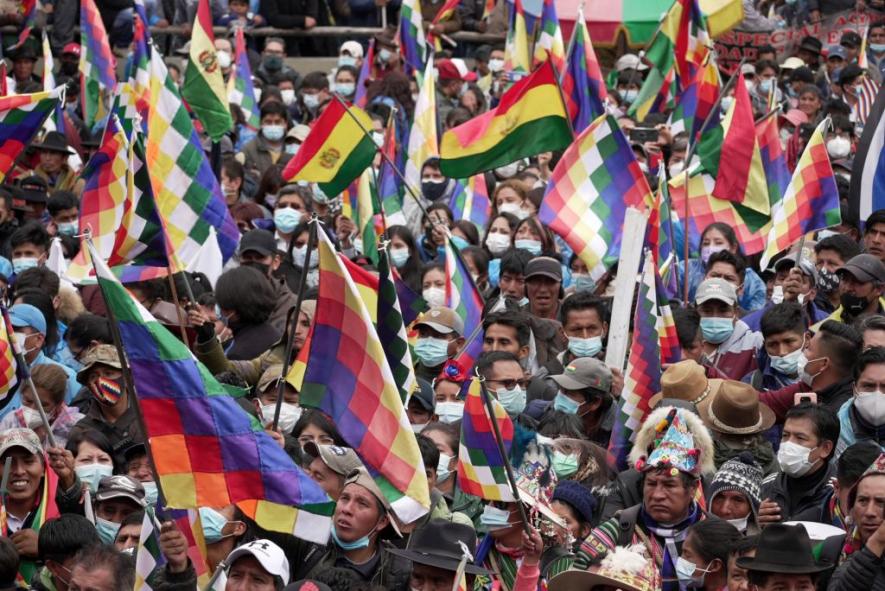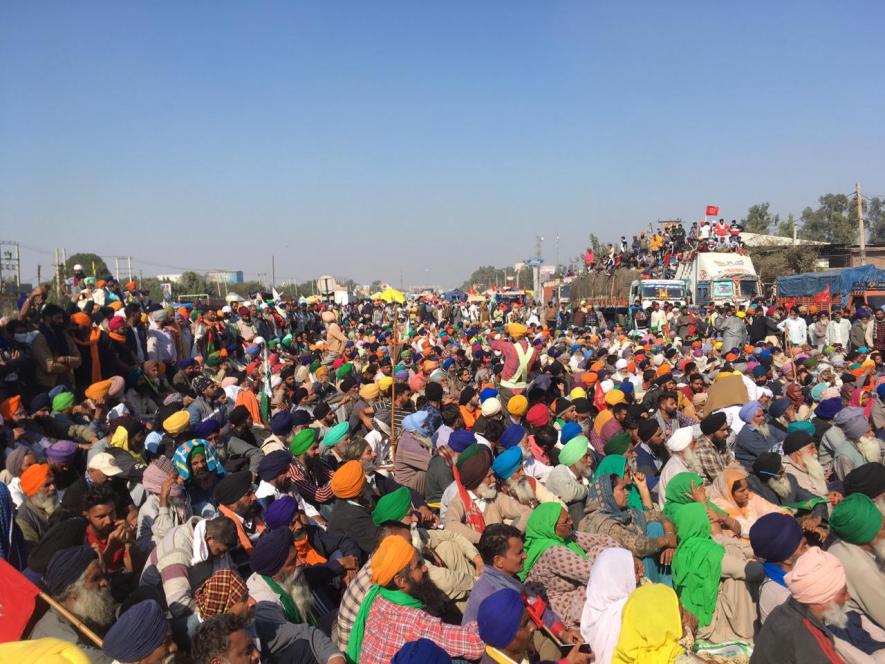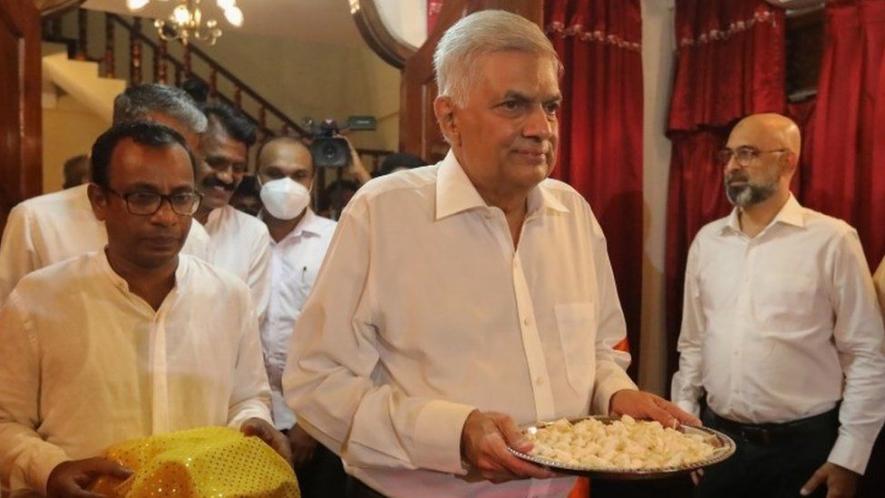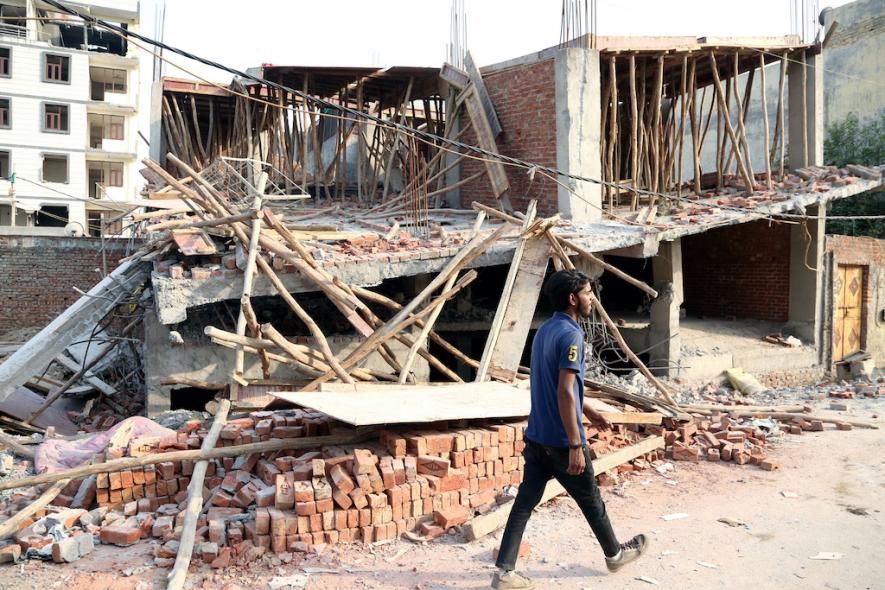Amy Goodman, Democracy Now!
May 16, 2022

The mass shooter who killed 10 people in Buffalo, New York, on Saturday posted a racist manifesto online before targeting a majority-Black neighborhood. His writings took heavily from conservative conspiracy theories that white people were in danger of being replaced by people of color. This so-called Great Replacement conspiracy theory has been promoted by major far-right media figures including Tucker Carlson of Fox News. “What it does is create a dynamic where believers view immigrants and nonwhite people as an existential threat not only to themselves physically but to their position in society,” says Nikki McCann Ramírez, associate research director at Media Matters for America, who has researched how Carlson uses his show to launder white nationalist ideology. We also speak with prominent antiracist scholar Ibram X. Kendi, who says mainstream conservatives are increasingly parroting extremist talking points.
AMY GOODMAN: This is Democracy Now!, democracynow.org, The War and Peace Report. I’m Amy Goodman.
We’re looking at the mass shooting in Buffalo, New York, Saturday, when an 18-year-old white supremacist wearing full body armor, carrying an assault rifle, opened fire on a supermarket in a Black neighborhood of Buffalo. We just went to Buffalo. Now we’re joined by Ibram X. Kendi, the Andrew W. Mellon professor in the humanities at Boston University, founding director of the Boston University Center for Antiracist Research, contributing writer at The Atlantic, where his new piece, published — well, it looks like it was published yesterday, but it was actually published last month, before the attack in Buffalo, headlined “The Danger More Republicans Should Be Talking About: White-supremacist ideology is harmful to all, especially the naive and defenseless minds of youth.” He is also the author of many books, including Stamped from the Beginning: The Definitive History of Racist Ideas in America, which won the National Book Award for Nonfiction, also author of How to Be an Antiracist and the children’s book Antiracist Baby. He’s got two forthcoming books out in June, How to Raise an Antiracist and the picture book Goodnight Racism.
ADVERTISEMENT
I hope those books won’t be banned the way a number of your books have been around the country, Professor Kendi. But as you watched this horror unfold this weekend, I think it’s very critical to talk about taking the word “fringe” out of fringe theory, the “Great Replacement” theory, because how mainstream what is motivating, quite explicitly, this young self-identified white supremacist fascist, who only wished he had killed more people.
IBRAM X. KENDI: Exactly. I mean, the leading — some of the leading politicians and media figures and intellectuals, particularly over the last two years, if not the last 10 years, have been asserting this idea that antiracism, that critical race theory, that Latinx immigrants, that so-called Black criminals, that Muslim terrorists, that people of color are harming or seeking to replace or even engage in a genocide against white people. That’s the “Great Replacement” theory, that is a dominant talking point particularly among members of the Republican Party. And so, this is certainly not a fringe theory. It was a fringe theory, on many levels, a decade ago, but it’s certainly not now.
AMY GOODMAN: So, respond to what took place this weekend, how it’s covered, the issue of it being a domestic terror attack, not a lone gunman, you know, who is suffering from mental illness. Last year his school was so concerned about what he was saying, they called in the New York state police, who had him taken for a mental evaluation, yet he could still lawfully buy, in his hometown, the weapon used in this attack.
IBRAM X. KENDI: For years now, law enforcement officials and FBI have been talking about and have been acknowledging, whether you’re talking about the head of the Justice Department or the head of the FBI or even local officials — have been referring to white supremacist domestic terror as the leading terrorist threat of our time. And it’s indisputable. And we also know that the people who are most likely to carry out these acts of domestic terror are younger white males.
And so, the fact that people — that this nation still does not recognize that we have a serious problem on our hands and these younger white males are engaging in all sorts of acts of terror against Jewish Americans, against Black Americans, against Asian Americans, against women, against people from the LGBTQ+ community, and that — you know, I mean, that, to me, is part of the sort of horror. That, to me, is part of the toll that I think is weighing on people, because even after all of these mass murders and shootings over the last few days, people still don’t feel as if this nation is seeking to protect them, is seeking to keep them safe.
AMY GOODMAN: As we continue our coverage of the massacre in Buffalo and what led to it, I want to look at the role of Fox News in pushing the “Great Replacement” conspiracy theory and opposition to gun control, particularly through Fox’s most popular host, Tucker Carlson. A New York Times investigation last month found he invoked the conspiracy that Democrats are trying to force demographic change through immigration in more than 400 episodes of his show on Fox News.
I want to also bring in another guest to join Professor Kendi. Nikki McCann has spent years compiling evidence for the watchdog group Media Matters of how Tucker Carlson has used his show to launder white nationalist ideology. Nikki McCann Ramírez is going to join us in a second, but first just a few examples she found of Tucker Carlson repeatedly defending the white supremacist “Great Replacement” conspiracy theory. This is Carlson lashing out last April at President Biden’s immigration policy.
TUCKER CARLSON: An unrelenting stream of immigration. But why? Well, Joe Biden just said it: to change the racial mix of the country. That’s the reason, to reduce the political power of people whose ancestors lived here, and dramatically increase the proportion of Americans newly arrived from the Third World. And then Biden went further. He said that nonwhite DNA is the, quote, “source of our strength.” Imagine saying that. This is the language of eugenics. It’s horrifying. But there’s a reason Biden said it. In political terms, this policy is called the “Great Replacement,” the replacement of legacy Americans with more obedient people from faraway countries.
AMY GOODMAN: That’s Tucker Carlson on Fox News last April. This is another clip noted by Media Matters from last year as Carlson’s fearmongering about white replacement, genocide and a race war.
TUCKER CARLSON: The left and all the little gatekeepers on Twitter become literally hysterical if you use the term “replacement,” if you suggest that the Democratic Party is trying to replace the current electorate, the voters now casting ballots, with new people, more obedient voters from the Third World. But they become hysterical because that’s — that’s what’s happening actually. Let’s just say it it. That’s true.
AMY GOODMAN: For more, in addition to Professor Kendi, we’re joined in Washington, D.C., by Nikki McCann Ramírez, associate research director at Media Matters for America.
Nikki, thanks so much for being with us. As we talk about what motivated this 18-year-old white supremacist, talk about the “Great Replacement” theory, where it came from and what Tucker Carlson is doing with it and how it’s being weaponized by everyone from the New York Congressmember Elise Stefanik to the senator from Wisconsin, Ron Johnson, Congressman Perry and more.
NIKKI McCANN RAMÍREZ: Yes. Good morning. Thank you so much for having me on.
The “Great Replacement” conspiracy theory has existed for decades. It is a subset of a larger conspiracy known as the white replacement or white genocide conspiracy theory. And it really came into a renewed era prominence in the last decade, with a period of acceleration in the last three to four years. In 2012, a French writer published a book called Le Grand Remplacement, and what it essentially argues is that there is a cabal, comprised typically of elites, Jewish people — because this is fundamentally an antisemitic conspiracy theory — and media figures, who are using immigration, birth rates and multiculturalism to eliminate or replace the white race. The theory baselessly makes these accusations of what are essentially natural or cyclical changes in demographics. And what it does is create a dynamic where believers view immigrants and nonwhite people as an existential threat, not only to themselves physically but to their position in society. And importantly, this theory wants believers to act against their supposed replacement.
So, when people like Tucker Carlson present a ready-for-cable version of the theory, it makes more extreme versions of it more accessible to audiences who would have never encountered it or would have never really thought about it. And if people believe in portions of the theory, like the idea that immigrants are being, quote-unquote, “imported” to replace them demographically, it becomes easier to tack on more extreme versions of the theory and fold them into their beliefs.
AMY GOODMAN: Can you talk about how Fox News has been covering this massacre?
NIKKI McCANN RAMÍREZ: Absolutely. So, a notable thing that we’ve seen, pretty much since the coverage broke, is that Fox has been very hesitant to make any reference to the “Great Replacement” theory or talk about specifics about what was in that shooter’s manifesto. And to be clear, the shooter’s manifesto did not directly reference Tucker, but Fox News is aware that they have been pushing this theory, selling it toward their audience, and they do not want to make that connection themselves, to explicitly connect that theory to their audience once again.
I believe what we’re seeing Fox News do right now is kind of fold back and fall back onto the traditional reactions that they have, that this will be used in an attempt to promote greater — or, sorry, to promote more gun restrictions, or, as we saw yesterday, one of their hosts on a Sunday show said that this shooting will be exploited to unfairly censor conservatives. I think Fox News is very aware of the hand that they’ve had in bringing this conspiracy to mainstream audiences. An Associated Press poll recently found that one in three Americans now believe that immigration is being used as a form of electoral manipulation, electoral replacement. And they are very aware that they have a hand in this narrative, so they are being very cautious about how they cover this, and are really trying to deflect the narrative onto other issues that don’t necessarily implicate them.
AMY GOODMAN: Do we know where the 18-year-old shooter, alleged shooter, Payton Gendron, learned about these theories — I mean, it’s a vast screed that he’s got, what, something like 180 pages — where he lived online, etc.?
NIKKI McCANN RAMÍREZ: Yes. So, the shooter did publish a more than 100-page manifesto. And I want to make a caveat here: As we already know, the manifesto was largely plagiarized from writings of other shooters, writings that he found online, so we should always take these, like, self-published screeds with a bit of a grain of salt.
What the shooter claims is that he was radicalized on 4chan and other online forums, that he didn’t really have a lot of direct contact with cable news. But what extremism researchers know is that Tucker Carlson’s rhetoric is very present on these forums. A lot of people on these forums view Tucker Carlson as an ally in presenting their messaging to a layman’s audience. So it’s not unlikely that this shooter encountered Tucker Carlson, his rhetoric, his statements about immigration, people of color. It wouldn’t be unlikely that he encountered them online.
And it’s important to point out here once again that presenting a sort of stripped-down version of this theory, which is what Tucker Carlson does — he doesn’t explicitly make references to racial superiority or explicitly make references to antisemitism when he talks about “Great Replacement,” but what he does do is give viewers context clues that allow them to make those connections themselves. He regularly attacks Jewish billionaire George Soros as an enemy of Western civilization who’s attempting to destroy America. He uses very racialized language when discussing the theory. And what that does is make it easier for his audience to find these more extremist spaces, to make those connections, and directs them toward a place where when a shooting like this happens and you have a third of the population that already believes that a large portion or a central tenet of this theory is true, it’s a lot harder for people to disavow it or to say, “That theory is incorrect. I shouldn’t subscribe to it.” They can say, “Oh, well, this was a,” quote-unquote, “‘lone wolf’ attack,” or “This man was crazy and acting on his own.” But the underlying beliefs can still be considered true. And that is a very dangerous thing for the most watched cable news host to be doing.
AMY GOODMAN: I mean, you can’t help think about what happened here, what happened at the church in South Carolina, what happened in El Paso in 2019. The shooter deliberately went to a place with a large Latino population clientele, customers, the local Walmart. He also issued a screed railing against a Hispanic invasion and posted that online. This was in 2019.
OTHER DEMOCRACY NOW VIDEOS

